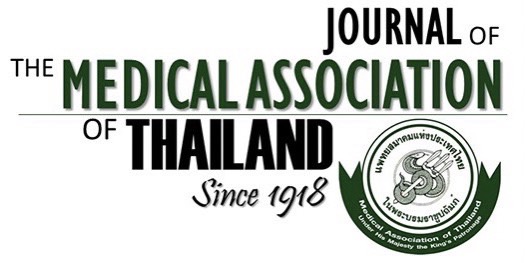Association between Cortisol Level at the Time of Shock and Hypoadrenalism after Hospital Discharge among Septic Shock Survivors: A Pilot Study
Kamonwan Mulalin, MD1, Anupol Panitchote, MD2, Sophon Dumrongsukit, MD1, Suranut Charoensri, MD3
Affiliation : 1Department of Medicine, Faculty of Medicine, Khon Kaen University, Khon Kaen, Thailand, 2Division of Critical Care Medicine, Department of Medicine, Faculty of Medicine, Khon Kaen University, Khon Kaen, Thailand, 3Division of Endocrinology and Metabolism, Department of Medicine, Faculty of Medicine, Khon Kaen University, Khon Kaen, Thailand
Background: Septic shock survivors are susceptible to adrenocortical dysfunction due to multiple physiological alterations during sepsis. However, no clinical studies have focused on hypoadrenalism.
Objective: To evaluate the prevalence of hypoadrenalism among septic shock survivors 28 days after hospital discharge and to identify clinical factors associated with subsequent adrenal function.
Materials and Methods: This prospective cohort pilot study included adult septic shock patients between June 2019 and December 2021. The patients with previously known hypoadrenalism, corticosteroids used within three months, or other types of shock were excluded. Clinical characteristics and severity of illness, including SOFA, APACHE III score, and shock parameters, were assessed during the shock resuscitation. Cosyntropin stimulation was performed after 28 days of hospital discharge in septic shock survivors to evaluate adrenal function. Hypoadrenalism was defined as having a peak cortisol level of less than 14.5 μg/dL or serum morning cortisol at baseline <3 μg/dL.
Results: Of the 81 septic shock patients, 36 survivors were enrolled, with a mean age of 64±17.6 years. The mean SOFA and APACHE III score was 7.44±2.76 and 67.1±25.5, respectively. Twelve patients (33.3%, 95% confidence interval [CI] 19.1 to 51.0) had hypoadrenalism after 28 days of hospital discharge. Cortisol level at the time of shock was not associated with the prevalent hypoadrenalism (adjusted odds ratio 0.99, 95% CI 0.98 to 1.01). However, log cortisol level positively correlated with a peak incremental response of log serum cortisol after cosyntropin stimulation (β=0.45, 95% CI 0.02 to 0.89, p=0.04) after adjusting with serum lactate, SOFA score, serum albumin, and hydrocortisone use.
Conclusion: The prevalence of hypoadrenalism among septic shock survivors is notably high, which raises concern over the need for adrenocortical evaluation during follow-up. Cortisol level at the time of shock may serve as a surrogate marker in predicting adrenal reserve in these patients.
Keywords : Hypoadrenalism; Cortisol; Septic shock; ACTH stimulation



